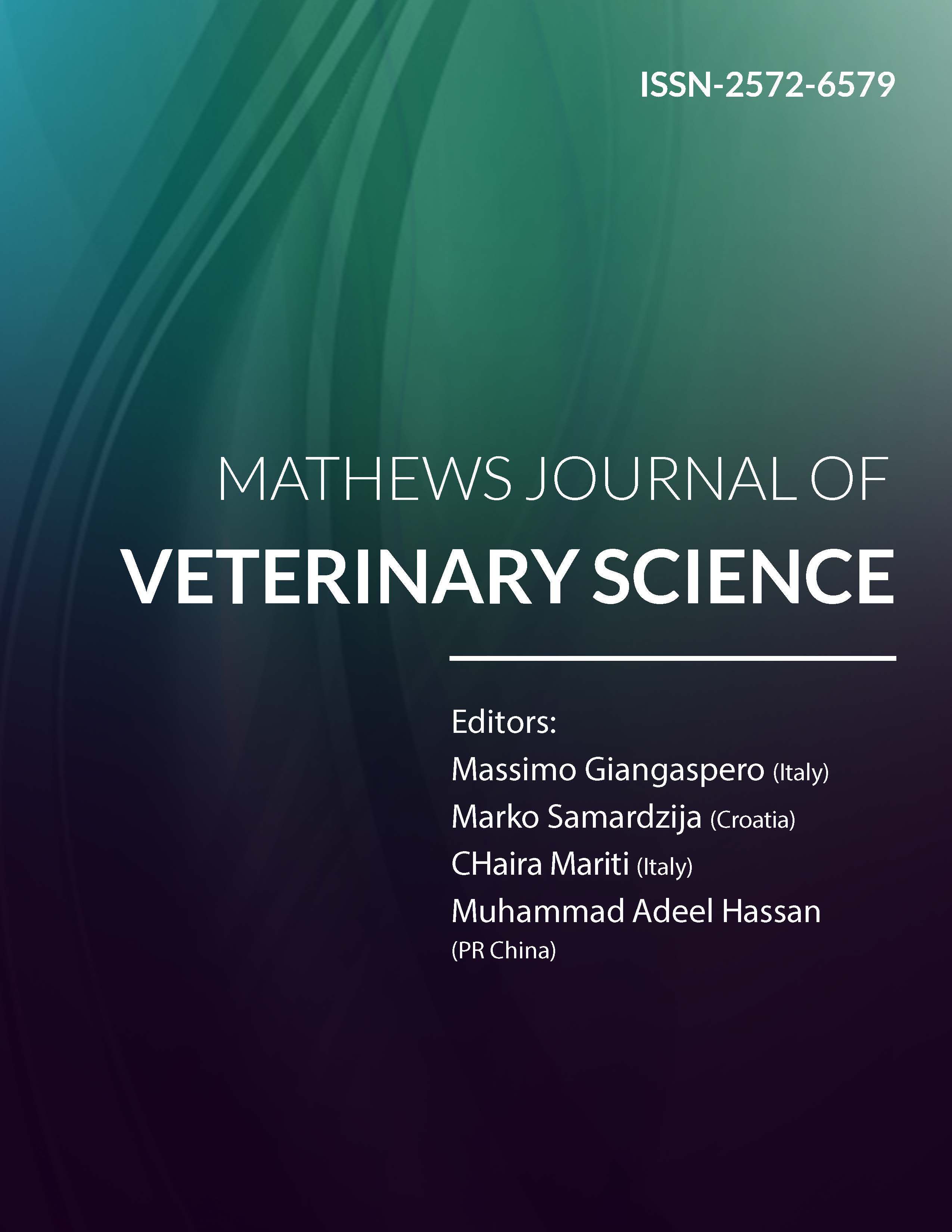
Information Links
Previous Issues Volume 8, Issue 2 - 2024
Seroprevalence and Associated Risk Factors of Contagious Caprine Pleuropneumonia in Selected Districts of Borana Pastoral Area, Southern Oromia, Ethiopia
Teferi Benti Moti*, Abebe Olani Bulto
Department of Veterinary Microbiology, Animal Health Institute, Ethiopia
*Corresponding author: Teferi Benti Moti, Department of Veterinary Microbiology, Animal Health Institute, Ethiopia, E-mail: [email protected].
Received Date: January 27, 2024
Published Date: March 18, 2024
Citation: Moti TB, et al. (2024). Seroprevalence and Associated Risk Factors of Contagious Caprine Pleuropneumonia in Selected Districts of Borana Pastoral Area, Southern Oromia, Ethiopia. Mathews J Vet Sci. 8(2):40.
Copyrights: Moti TB, et al. © (2024).
ABSTRACT
CCPP is considered one of the most severe and highly infectious diseases in goats. It results in heavy economic losses for countries involved in goat farming, especially in Africa, Asia, and the Middle East. The main mode of infection is by inhaling infectious droplets from active or carrier animals into healthy animals. The morbidity and mortality rates are quite high. Infection of goats with pleuropneumonia is limited to the alveolar tissue of infected goats, although available data suggest that sheep may also be infected. A cross-sectional study was carried out in a selected Borena zone of (Dubuluk and Gomole) districts between April and December 2020 G.C. The main goals of this study were to determine the sero-prevalence of contagious caprine pleuropneumonia in goats, examine the connection between risk factors, and find antibody in sheep against Mycoplasma capricolum subsp. Capripneumoniae. A multistage random sample approach was employed to select districts and pastoral groupings, or villages. A total of 452 serum samples from non-vaccinated animals (126 sheep and 326 goats) were collected. A competitive enzyme-linked immunosorbent assay was employed for antibody detection. The overall seroprevalence of CCPP in goats and sheep was 33.6% (152/452) at the individual animal levels recorded. In goats, 39.9% (130/326) and 17.5% (22/126) in sheep were recorded, with a statistically significant variation (p value = 0.000). A multivariable logistic regression analysis revealed that districts, species, age, and flock size were also significantly associated with sero-positivity, with odd ratios of (OR = 3.07, CI 95% 1.38–6.75, OR = 4.0, CI 95% 2.16-7.44, OR =.33, CI 95%.14–.76, OR = 1.16, CI 95%.59–2.29), respectively. Also, the study offers proof that sheep may have played a part in the disease's persistence. It is important to use caution when bringing new animals into a flock in endemic areas. The spread of the disease is controlled by on-site quarantine, flock testing, and positive animals being culled from the flock.
Keywords: CCPP, cELISA, Endemic, Infection, Ruminant.